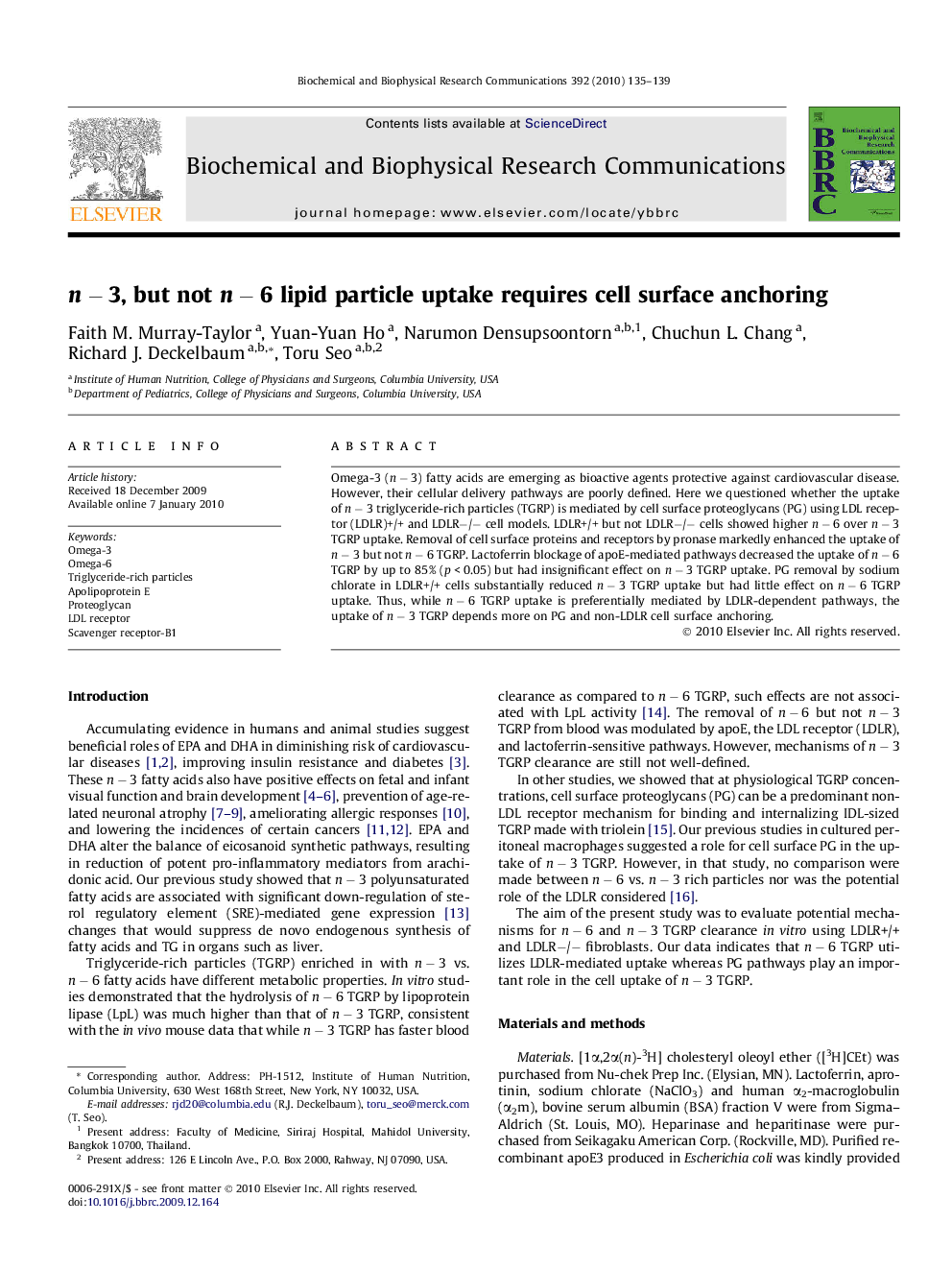| Article ID | Journal | Published Year | Pages | File Type |
|---|---|---|---|---|
| 1932676 | Biochemical and Biophysical Research Communications | 2010 | 5 Pages |
Omega-3 (n − 3) fatty acids are emerging as bioactive agents protective against cardiovascular disease. However, their cellular delivery pathways are poorly defined. Here we questioned whether the uptake of n − 3 triglyceride-rich particles (TGRP) is mediated by cell surface proteoglycans (PG) using LDL receptor (LDLR)+/+ and LDLR−/− cell models. LDLR+/+ but not LDLR−/− cells showed higher n − 6 over n − 3 TGRP uptake. Removal of cell surface proteins and receptors by pronase markedly enhanced the uptake of n − 3 but not n − 6 TGRP. Lactoferrin blockage of apoE-mediated pathways decreased the uptake of n − 6 TGRP by up to 85% (p < 0.05) but had insignificant effect on n − 3 TGRP uptake. PG removal by sodium chlorate in LDLR+/+ cells substantially reduced n − 3 TGRP uptake but had little effect on n − 6 TGRP uptake. Thus, while n − 6 TGRP uptake is preferentially mediated by LDLR-dependent pathways, the uptake of n − 3 TGRP depends more on PG and non-LDLR cell surface anchoring.
